

Regional General
Regional General Assembly
Continuing
Continuing Our Iiyiyiu Education
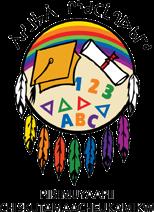
Iiyiyiu
Week
Week 1
Monday, October 3 Tuesday, October 4 Wednesday, October 5 Thursday, October 6 Friday, October 7
Monday, October 3 Tuesday, October 4 Wednesday, October 5 Thursday, October 6 Friday, October 7
Whapmagoostui
Whapmagoostui
Chisasibi Wemindji Eastmain
Waskaganish
Chisasibi Wemindji Eastmain Waskaganish
Week 2
Week 2
Monday, October 17 Tuesday, October 18 Wednesday, October 19 Thursday, October 20
Monday, October 17 Tuesday, October 18 Wednesday, October 19 Thursday, October 20
After two years of
Nemaska Waswanipi Oujé-Bougoumou Mistissini

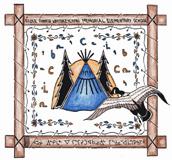
Nemaska Waswanipi
Oujé-Bougoumou Mistissini
After two years of pandemic disruptions,
forward
this opportunity to
look forward to this opportunity to visit your communities and schools.
communities
schools.
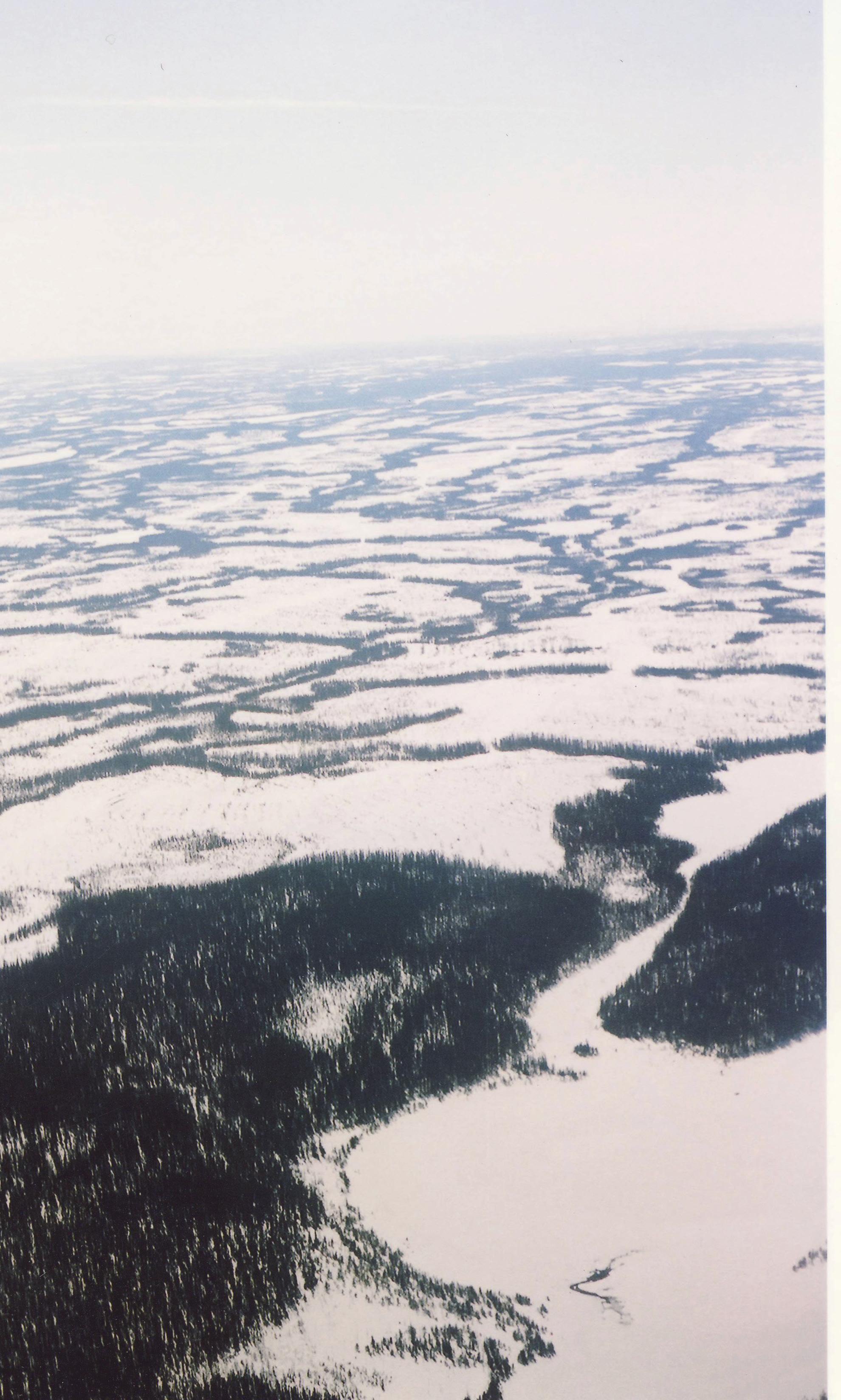


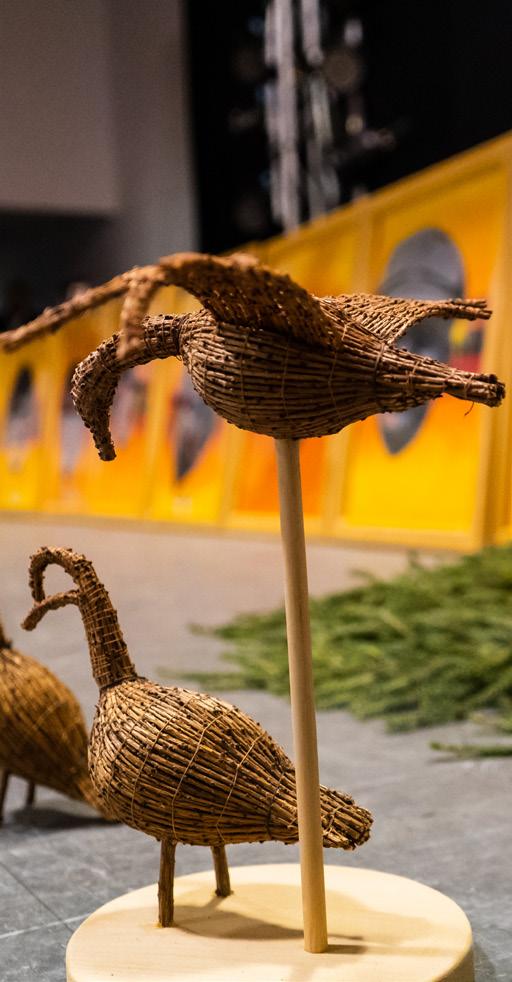






Teach the truth
by Will NichollsThe Day of Truth and Reconciliation is a day to… well, saying celebrated and honoured brings into question just what we are honouring. So, maybe remembered? It’s hard to use a single word that encompasses all that the day is supposed to represent. In the end, it is a day to reflect on Canada’s legacy with its Indigenous population and what it did to them.
In the schools, it’s Orange Shirt Day. A concept easier to deal with but one that doesn’t say everything it should. When I found out that the students at my sons’ Montreal school would be wearing orange shirts September 30, I decided that the day should be one of teaching why there is a Truth and Reconciliation Day. It was a call to action by the Truth and Reconciliation Commission, but one that only started last year after the unmarked graves of residential school children were discovered and shocked many mainstream Canadians and people around the world.
Last year, children were allowed to wear orange shirts, but little was done in the schools. I contacted my sons’ school and asked if they would be interested in having me talk to the kids about the day and the Cree of James Bay. Principal Dina Vourdousis of Carlyle Elementary School thought it was a great idea. I told her I would make it age appropriate and talk about more than just the residential schools but also about growing up in an Indigenous territory and how it influenced the direction I would choose to live my life. I explained that it would have to be understood I could not speak on behalf of all Indigenous First Nations and their experiences.
Indigenous organizations and people who are outside their communities have a role to play

I see what has been done by the gov ernment to provide resources for schools, but it must be remembered that this is the same government that created those residential schools. Some of which were okay, but most were mediocre at best. They do not adequately cover or educate about the issues faced by Indigenous Peoples.



Certain aspects of the residential school system can be seen to this day. The number of Indigenous children in fos ter care. The infamous Sixties Scoop, with catalogues depicting Indigenous children you could purchase for adoption. The systematic racism faced by Indigenous people by government and public services and agencies. The Buffalo Jump program can be seen in the poverty of Indigenous communities, a lack of a viable economy as traditional lands are exploited. And, of course, the problems with clean water to drink or clean yourself with.
That is why Indigenous organizations and people who are outside their com munities have a role to play. Reach out, share and teach the children about what
is behind truth and reconciliation. This is how we can ensure that it never happens again. It is something that all Indigenous people should be doing. It will even lessen that fear of the stranger which can lead to racist beliefs. When you know someone, it is harder to dehumanize them or make them out to be the problem.
Let us tell our story in our own way with the truth as we lived it then and now. At the school, I have no desire to send the children home crying and shell-shocked. I want them to have some idea of who we are, what we have experienced both the good and the bad. This is so Canada’s Indigenous Peoples aren’t something that they have only seen through the filter of media. We need to be in their lives as they are in ours.
Think about doing something once a year for your people. It should also be done in our own schools as some youth have no idea of why this affects their parents and even them. It is time for Indigenous people to make this day mean something more than a few moments once a year.
Recognition in sight
Discussions with Ottawa raise hopes for MoCreebec
by Ben Powless, Local Journalism Initiative Reporter | Photo provided by Wallbridge Mining CompanyThe Grand Council of the Crees and the Cree Nation Government signed a memorandum of understanding (MOU) with the Canadian government September 14 initializing “exploratory discussions” to recognize MoCreebec Eeyoud as a distinct Indigenous commu nity.
The move comes after the Grand Council recognized MoCreebec as the 11th Cree community in 2017. The MoCreebec Eeyoud voted last October to establish their community base in Moosonee, where many now live.
The discussions will take place with a Standing Liaison Committee under CrownIndigenous Relations and Northern Affairs Canada, set up under the Federal New Relationship Agreement signed in 2008. The Grand Council and the CNG previ ously signed an MOU with MoCreebec to have them recognized as a community.
MoCreebec Chief Allan Jolly said this moment has taken nearly 40 years to arrive. “When the James Bay and Northern Quebec Agreement (JBQNA) was signed in 1975… there was a group of us Crees living in Ontario, kind of left out of being part of this agreement,” Jolly said.
“The Grand Council of the Crees knew about us and sort of deliberately decided to leave us out because being in Ontario would complicate things, trying to bring Ontario into the mix into negotiations with Quebec and Canada. But Cree leadership at that time said they’d leave the Cree question in Ontario until another time,” Jolly added.
The federal government position for decades was that it had no legal obli gations towards Quebec Crees living in
Ontario. “We’re here, partly it had to do with them, they established the residen tial school here in Moose Factory, I was part of that group of children placed there,” observed Jolly, who is originally from Waskaganish.

According to Jolly, roughly 400 Cree boys and girls were brought from the Quebec side, and many stayed. Additionally, a federal Indian hospital was built in Moose Factory in the 1950s to deal with the tuberculosis epidemic, with many others staying after being released from treatment. Jolly said the federal government had an Indian agent in the community until the 1960s, “so they knew about us.”
Now that the government has agreed to preliminary discussions, Jolly is confi dent the process will lead to recognition for MoCreebec people. “I have to be optimistic about it, we’ve been at it for 40 years. In a way we’ve done our work, what we need to do at our end, in order to bring our people along to this point,” he said.
“Given the political climate, when you consider the UN Declaration on the Rights of Indigenous Peoples and the Truth and Reconciliation Commission, both are very supportive statements saying that any thing with Native people should be dealt with in the context of their treaties,” he added. “They’re willing to listen to new ideas on how Indigenous communities should be dealt with, and with the Indian Act system isn’t exactly the greatest. I think there’s an open ear with the gov ernment.”
Bill Namagoose, lead negotiator for the Grand Council, said that the federal government has had a file on MoCreebec
since the 1980s. But it was “put in the freezer, and we found it in the bottom of the freezer and tried to thaw it out.”
The talks constitute “a major move,” he added. “We want to go from explor atory discussions to a negotiation table with the federal government on creating a Cree community for MoCreebec on the Ontario side. It’s no secret what we’ve wanted, it’s just taken so long.”
Jolly points to the success of the JBQNA in transforming the Cree com munities of the 1970s into “modern towns and villages” as a guideline for how a new treaty could assist members of MoCreebec. “It was very innovative and forward thinking, involving the feds and the province and, of course, the Crees themselves,” he noted.
As for Ontario, Jolly said that they’ve met with provincial officials and cabinet ministers going back 30 years, and that they are prepared to join negotiations when Ottawa deems it necessary.
“We have to talk to the province of Ontario, we think, on land issues,” Namagoose said. “That’s the main thing the Ontario government will be involved in. We hope they’ll be able to financially contribute, but it’s probably a long shot.”
Jolly credits the CNG for funding this process, rather than waiting for federal grants. The CNG will help cover costs for the MOU, negotiations, technical work such as engineering, and other human resources.
“I’m close to seeing what was my dream,” Jolly shared. “I’m 72 and I’d like to see something happen, ASAP. But it might be a bit of a ways off.”
TopJurist
O

n September 1, Michelle O’Bonsawin of Odanak First Nation became the first Indigenous judge to serve on the Supreme Court of Canada. The fluently bilingual 48-year-old Abenaki was raised off-reserve in Hanmer, a small francophone community in northern Ontario.
“I believe my experience as a francophone First Nations woman, a parent, a lawyer, a scholar and a judge provide me with the lived understanding and insight into Canada’s diversity because I and my life experience are part of that diversity,” stated O’Bonsawin in her application questionnaire.
O’Bonsawin had previously become the first Indigenous Ontario Superior Court judge in 2017. As general counsel for the Royal Ottawa Health Care Group for eight years, she devel oped an expertise in legal issues related to mental health and conducted significant research into Gladue principles in the forensic mental health system.
“It is crucial that our legal system recognize and support efforts to sensitize the general public regarding mental illness via their judicial behaviour and understanding as articulated in judgments,” she said. “Quickly identifying mental health prob lems at the start of any legal proceeding would help individuals access the appropriate treatment they need.”
Prime Minister Justin Trudeau announced his nomination of O’Bonsawin to the county’s highest court August 19, after an open, non-partisan selection process. Last year, Mahmud Jamal became the first person of colour appointed to the court.
In 2020, the National Association of Women and the Law (NAWL) sent Trudeau a letter, endorsed by dozens of organiza tions, advocating for the Supreme Court’s vacancies to be filled by candidates from “equality-seeking communities.”
Considering the over-representation of Indigenous people in the criminal justice system, NAWL was “heartened” to see a nominee with specific expertise related to Gladue principles, which considers the unique experiences of Indigenous people in judicial decisions.
O’Bonsawin’s appointment was celebrated by Indigenous advocates as a victory for inclusivity. Murray Sinclair, the former senator and chair of Canada’s Truth and Reconciliation Commission, shared that he had advised O’Bonsawin during her application process and asserted it was “long past due that the court has a seat for an Indigenous Justice.”
Michelle O’Bonsawin appointed Canada’s first Indigenous Supreme Court judge
“Justice O’Bonsawin will be an import ant voice at the Supreme Court, given her deep knowledge of issues related to Indigenous peoples in Canada,” stated Sinclair. “The court is made stronger, and our decisions are better, when there are diverse perspectives where they are needed most.”
Several First Nations offered their congratulations, asserting the nom ination signified a monumental shift towards true reconciliation and better outcomes for Indigenous communities. The Mississaugas of Scugog Island First Nation stated, “The diversification of our institutions is critical to strengthening the voice of Indigenous people in this coun try.”
“Representation of Indigenous people is important at every level of government and the justice system, to ensure that issues are examined through a sensi tive and unique Indigenous lens,” said Mohawk Council of Akwesasne Grand Chief Abram Benedict. “It is also inspira tional and motivational for young people – and women – of all First Nations com munities to see a person like them climb the ranks of success.”
Her family name, which means “path finder” in Abenaki, was made famous by her cousin, renowned filmmaker Alanis O’Bomsawin. Another cousin, Chief Richard O’Bomsawin of the Odanak First Nation was elated by her nomination, declaring, “She’s definitely the person for the job.”
O’Bonsawin told MPs and senators she decided to become a lawyer at age nine, undeterred by a high school guid ance counsellor’s suggestion she might be aiming too high. While she felt discon nected from her heritage during child hood, she joined the Indigenous Law Students Association when she attended law school at the University of Ottawa and started getting involved in Indigenous cases.
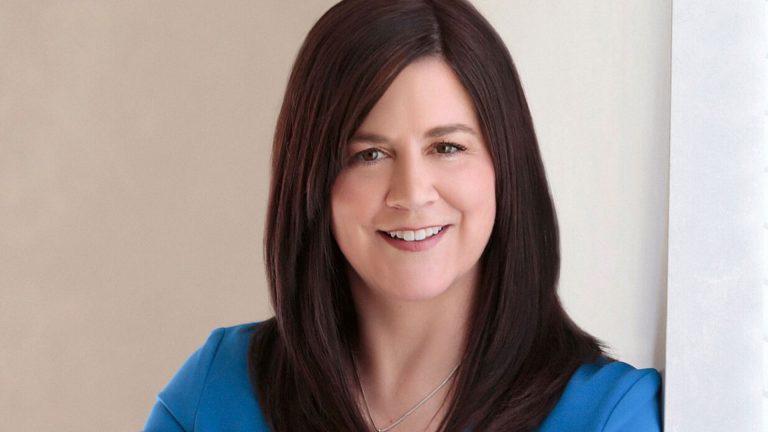

Questioned about the Indigenous teachings that shaped her, O’Bonsawin responded, “being humble ... we always have to remember where we come from.” She is studying Abenaki but doesn’t yet consider herself a fluent speaker. “It is not always easy being a first because you’re under a microscope at times,” she admitted.
With two major cases about to come before the Supreme Court that could potentially impact the future of Indigenous political autonomy, it’s hoped her perspec tive can help expand minds among the court’s nine judges. These judges repre senting the country’s four major regions work collaboratively on deciding issues of the highest national importance.
In early December, the court is sched uled to hear Quebec’s appeal that the federal Bill C-92, which concerns the right of Indigenous peoples to write their own laws for child-welfare services, violates provincial jurisdiction. The federal gov ernment affirmed this right to self-govern ment two years ago.
Another case from Yukon with no date yet determined concerns an Indigenous community’s right to set a residency requirement for members of its council. These two cases together will force the Supreme Court to confront the role of Indigenous laws and legal orders that pre-exist the country’s founding 1867 Constitution.
O’Bonsawin’s appointment comes at a time when more Indigenous people are assuming important roles in Canada’s institutions. On September 22, Dene (K’ashógot’įne) judge Shannon Smallwood became the first Indigenous person to be named chief justice of the Northwest Territories Supreme Court.
While some policy analysts are skep tical about how much O’Bonsawin’s appointment will impact constitutional change in what remains a colonial insti tution, her legal and personal background will certainly enhance the court’s diver sity. As the most recognizable symbol of Canada’s justice system, reflecting soci ety’s diversity is one of the court’s three stated “institutional needs.”
“It’s very difficult to have confidence in the ability of the court to pronounce on those issues when you don’t have any individuals at the court who spent their lives working in Indigenous laws, customs or traditions,” commented Indigenous Bar Association president Drew Lafond. “Hopefully with Michelle’s appointment, we can begin to change that.”


Mint issues Every Child Matters coin
Ahead of the National Day for Truth and Reconciliation September 30, the Royal Canadian Mint released a special coin-sized keepsake to honour residential school survivors and victims. On one side, the words “Every Child Matters” are written in English and French, with orange-coloured handprints forming the shape of the sun.
The keepsake “invites reflection and conversation about the impacts of those schools, the conditions that created them, and how peo ple living in Canada can turn reflection into acts of reconcil iation,” stated the Mint.
Featuring First Nations, Inuit and Métis traditional art forms, its design is the result of a collaboration between artists Leticia Spence (Pimicikamak and Opaskwayak Cree First Nations), Jason Sikoak (Inuit) and JD Hawk (Métis).
“This design represents familial love as expressed through the tikanagan [a hand made woven cradle board], a kinship practice involving the whole family and community,” said Spence.
Each artist chose symbols representative of their culture, which are grouped around a stylized image of roots and berries. First Nations teach ings are represented by sym bols of water, a fireweed flow er and a teepee.
Traditional tattoo line work, northern lights, an ulu (traditional curved knife), and a brother and sister signify ing those sent to residential schools represent the Inuit perspective. The Métis are represented by an infinity symbol, a beadwork flower, a traditional sash and a bison facing east to confront the approaching colonizers “in the same way bison often face directly into a storm.”
The keepsake is available for $9.95 through the Royal Canadian Mint and partic ipating Canada Post loca tions. Net proceeds will be donated to the Na-mi-quaini-mak Community Support Fund, established by the National Centre for Truth and Reconciliation (NCTR), named for an Anishinaabemowin phrase meaning “I remember them.”
Paukuteu announces women’s conference
Paukuteu, the Women’s Committee of Mashteuiatsh, is organizing what they are calling a super-conference called “Women’s Territory: 75 years of portage/carry ing.” The main speaker for the event is Bibiane Courtois, from Pekuakamiulnautsh First Nation. Courtois began her career in 1967 working at a psychiatric institution in Roberval where she pushed for more compassionate and
culturally adapted forms of care.
Elected president of Quebec Native Women in 1983, Courtois was instru mental in helping to overturn the Indian Act provisions that forced First Nations women to give up their Indian status for marrying a non-Native person. She was later the first woman appointed to the Commission des droits de la personne and the Conseil du statut de la femme du Québec.
Paukuteu is a commu nity organization based in Mashteuiatsh focused on projects aimed at women and girls, founded in 2012. The con ference is set for October 5 at the Hôtel Château Roberval and will be conducted in French.
Mayoral candidate’s remarks condemned
At a municipal election event in Winnipeg, a mayoral can didate was condemned for remarks suggesting the rea son for high rates of violence faced by Indigenous women is that Indigenous men don’t respect women.
Two separate Grand Chiefs from Manitoba and another Indigenous mayoral candi date, Robert-Falcon Oullette, decried the comments Don Woodstock made at an event organized by the Council of Winnipeg Women during a dis cussion about improving safe ty for women on public transit.
In Brief
Deputy Grand Chief Cornell McLean of the Assembly of Manitoba Chiefs said the comments were appalling and demanded an apology. Grand Chief Garrison Settee of Manitoba Keewatinowi Okimakanak said the com ments were ignorant and unin formed.
In Brief
McLean stated that the issue of missing and murdered Indigenous women is linked to the fallout effects of colo nization, assimilation and res idential schools. He called on Woodstock to take a cultural sensitivity course, saying his comments went against the calls to action from the Truth and Reconciliation commis sion.
Woodstock stood by his comments, saying that chiefs and Elders have a role to play in stopping missing and mur dered Indigenous women in their societies, according to a CTV news report. He also said at the event that Indigenous men have too many sexual partners.
Supporting First Nations education
In July, the First Nations Education Council signed a $1.1 billion education agree ment with Indigenous Services Canada in Kahnawake, aiming to further Indigenous self-de termination over education.
The five-year agreement will support culturally appro priate curricula, transporta tion and help recruit over 600 teachers across the 22 com munities.
The FNEC says that pol iticians campaigning in the Quebec elections have yet to respond to the labour and edu cation disparities confronting Indigenous youth in the prov ince.


Mistissini’s Nishiiyuu gathering and powwow celebrate living culture
Liberating Elders’ knowledge
by Patrick Quinn Local Journalism Initiative Reporter Photos by Theresa Macleod LoonAs summer delivered its last blast of warmth over a sunny mid-Septem ber weekend, Mistissini was bustling with cultural celebration and healing gatherings. Following an action-packed powwow weekend, the community hosted the Nishiiyuu Council of Elders’ 10th annual cultural gathering September 19-22.
It kicked off with Mistissini Day September 16, which featured inflatables and rides for kids and various games and contests for all ages. After pan demic restrictions, locals and visitors were excited to gather again at the community’s powwow, a summer highlight since 2013.

The head dancers were Jacob Coon-Come and Drew Wapachee McDougall, the youth head dancer was Jacob’s daughter Diane Coon-Come and Mary Coon was the Elder head dancer. Popular groups Black Bear and Northern Voice were invited as host drums, with Waseskun and Moosetown also participating. Over a dozen vendors were on site with Roy Ottereyes as arena director and Jimmy Bossum as MC.
NINAN and Scott Pien-Picard were Sunday night’s headlining acts, fol lowing openers Ezekial Neeposh, Sherri Iserhoff, Hannah Louttit and Patrick Petawabano. Saturday’s musical entertainment included Mistissini’s rising star Siibii with opening support from Sinematic, Yvanna Coonishish-Coon and Nicholas Wapachee, before a 90s dance party DJed by Mike E Mike.
Between the grand entry and retiring of eagle staffs at day’s end, there were the usual procession of colourful dances, including men’s and women’s traditional, inter-tribal, fancy shawl and jingle dress. There was also a “potato dance”, in which partners must dance with a potato between them.
There was significant crossover between the two events, including a powwow drumming workshop with Charlie Ottereyes from Waskaganish’s Waseskun, co-presented by Nishiiyuu and Mistissini Youth Council.
“Part of my job is making sure the youth have a voice,” said local Youth Chief Justice Debassige. “We have to adapt to trends that come and go and make it more us. Our next event is our haunted trail if anyone wants to get scared – no pacemakers!”
With Elders disproportionately impacted by the pandemic, this first gathering in three years held special meaning. Many have passed on and there were new faces. While organizations often come to these gatherings sharing updates or seeking guid ance, this year the Elders primarily aimed to have a discussion among themselves.
“It was emotional to see the Elders again,” said Stella (Masty) Mistayabimiko, the gathering’s organizer. “We gave the Elders an opportunity to talk about how Covid impacted them with the cur fews and shutdowns. I was happy to see a lot of doctors, nurses and people from the community come and participate.’
Rather than dwelling on residential-school traumas, Elders focussed on an “honouring our children” theme. A roundtable discussion yielded the “monumental” consensus that there would be no further suppression of Elders’ knowledge about shaking tents and other cultural ceremonies that have long been considered taboo.
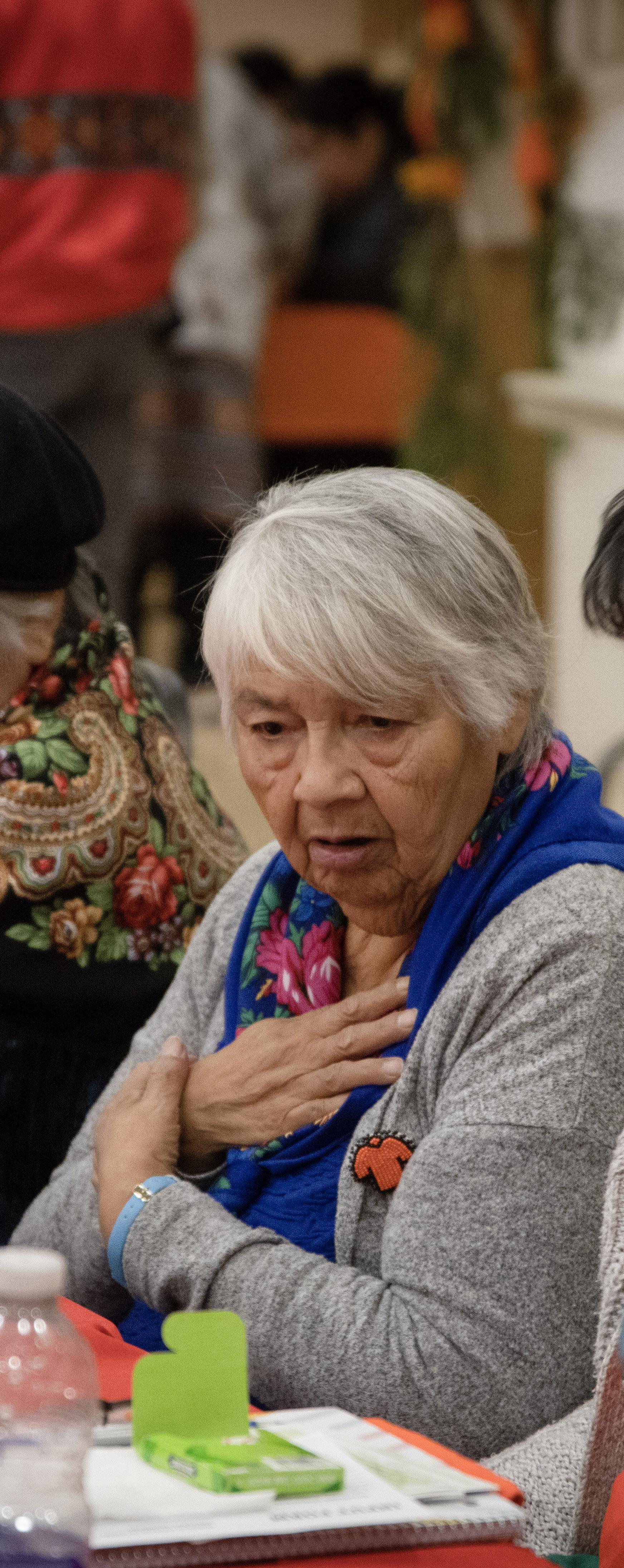
“Before it was never talked about, with extreme life groups saying you’re going to burn in hell,” shared Mistayabimiko. “The tone was it’s time to talk about it, educate our youth about the sig nificance of these ceremonies. A lot said going back to our cultural roots, traditional medicine and ceremonies was what was going to save us from Covid.”
Mistayabimiko believes everything goes more smoothly when the Elders lay the foundation, and gently nudge the Nation through trials and triumphs.
“One Elder said we cannot be stuck in a time that no longer exists, but we can hold on to our culture and language,” Mistayabimiko told the Nation. “The Elders put it perfectly: we can never lose our language as long as we have the courage to want to learn it. Nothing is lost as long as the spirit of the communities want to bring it back.”
Elders suggested expanding the “safety net” of language services throughout Cree entities, developing Cree programming for iPads and games, and agreeing to speak 100% Cree at home with grandkids.
Robbie Matthew, who recently turned 89 and was honoured at the Annual General Assembly, received a special tribute at the gathering that highlighted his advocacy for Cree language and culture around the world. When he educated European animal-rights groups like PETA about responsible Cree harvesting practices, Mistayabimiko thinks it shifted perceptions about the fur trade.
“He’s probably the only Elder I know who has travelled around the world fighting for Cree rights,” Mistayabimiko said. “When we showed the tribute, there wasn’t a dry eye in the room because everyone was so touched.”
This video and other highlights from the gathering will be available on Nishiiyuu’s updated website, expected to be online shortly after October’s moose hunt. The website will include a new video series, “Bannock and Tea”, featuring interviews with 22 Elders sharing teachings about medi cine ceremonies, traditional gender roles and other cultural knowledge.
As Mistayabimiko moves on to other projects, she reflected that attendance has grown from about 70 to 300 in 10 years, with this year’s gathering hosting traditional tea and medicine stations and cultural expos from each community. On the emotional final day, she affirmed her person al contributions to keeping the culture strong.
“I proudly speak my language and go to ceremonies in honour of all those who were not allowed to talk Cree, who had their drums and pipes burned,” Mistayabimiko asserted. “If someone wants to learn, I’ll gladly teach them. The small things we do become bigger things.”
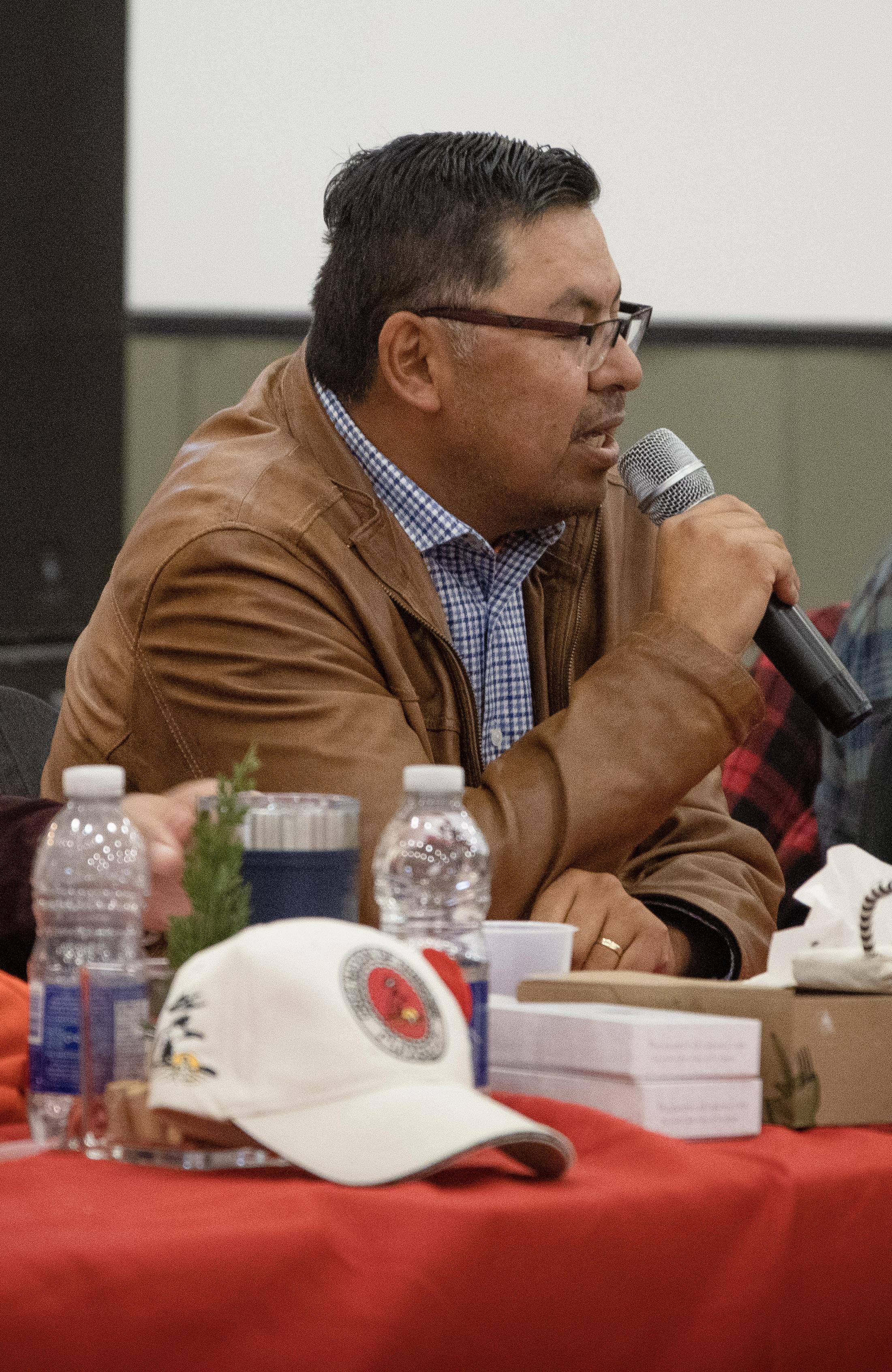

Flushing the
The Issue with Tissue connects Indigenous history with industrial exploitation
by Patrick QuinnOn September 18, The Issue with Tissue: A Boreal Love Story made its world premiere at the Cinéfest Sudbury International Film Festival. The documentary by award-winning actor and filmmaker Michael Zelnicker draws a connection between colonial violence and unfettered extractive industrial exploitation.
While its catchy title springs from a 2019 report exposing how major US tissue brands degrade boreal forests for throwaway products, the film serves as a launching point for a group of First Nations leaders to talk about the impor tance of these forests for both cultures and the entire world.

“It has evolved into a much deeper story that runs from trees to toilet paper to treaties, from carbon to climate change to caribou to colonization, from water to birds to Indigenous stewardship,” Zelniker told the Nation
Zelniker says the 600 First Nations communities inhabiting Canada’s boreal forest need to be front and centre of any
story about the world’s largest forest ecosystem. It’s why he embarked on an epic 42-day, 16,000-km journey to meet with more than 50 Indigenous leaders and conservation scientists.
Despite pandemic protocols, Zelniker was able to conduct outdoor interviews exploring the stories his subjects want ed to tell. With the Kamloops residen tial school discoveries fresh on people’s minds, these often-emotional discussions probed the painful legacy of colonization while transmitting generous cultural wis dom.
“They shared their stories with an honesty and candour that is surprising to most people who see the movie,” said Zelniker. “When I met Senator Michèle Audette, after three minutes she was talking about feeling she didn’t have a place on Earth in 2013. I’m humbled by the fact these people trusted me the way they did.”
Framed as a talking circle, numerous Indigenous storytellers speak intimately about their “umbilical” connections with
their traditional territories. As Kaska Elder Dave Porter said in the film, “The forest is alive, the land wants to talk to us – we have to train humanity to listen.”
“Our identity is embedded in the land and expressed through the trees them selves,” explained the late Anishinaabe Elder Dave Courchene. “The boreal forest carries that identity of who we are as a people. The trees hold the memory of our creation. It is said if you want to hug the Creator, hug a tree.”
Introductory segments break down the basic science of how trees have evolved, the photosynthesis process and the symbiotic forest ecosystem. Viewers learn the boreal forest contains a quarter of the world’s wetlands and more fresh water than anywhere else on the planet. It stores more carbon than any other eco system, including twice the amount avail able in remaining oil reserves. However, forest destruction turns it into a deadly carbon source.
With vivid glimpses of the region’s wildlife, the film shares that about two
Boreal
billion birds nest in the boreal each year, although that number has declined 30% in the last 50 years. Parallels are inferred between species loss, like the 99% decline of the George River caribou herd from 1990s levels, and industrial motivations.
“As scientist Martin St-Laurent said, no more caribou on the land, no more constraints to get at the resource, which you could substitute for no more Indigenous peoples on the land, no more constraints,” Zelniker asserted. “So much of this genocide against the First Peoples was to get at their land to auction it off for industrial exploitation.”
According to Canadian Parks and Wilderness Society, southern forests are lost at a rate of 1% each year, a pace matching the tropical rainforest’s destruc tion. Another study by Wildlands League found an average of 14% of clear-cut areas surveyed showed no tree regener ation decades after logging, exacerbated by roads, slash piles and other logging infrastructure that inhibit vegetation.
The film implies we are complicit in flushing our forests down the toilet by purchasing toilet paper brands sourced from virgin boreal. In 2020, activism led to a Procter and Gamble shareholder revolt, yet the corporation’s biggest tis sue products remain unchanged, and its supplier even launched lawsuits against Greenpeace to silence the protests.
“Accumulating more and more is only lining pockets of the corporate world and destroying our planet,” Zelniker said. “What were we hording at the beginning of Covid? Toilet paper, of all things!”
Environmentalists emphasize the boreal forest’s role in stabilizing the cli mate and mitigating global warming. This “boreal love story” takes Courchene’s words as its motto: “What we do to the land, we do to ourselves.”
The Issue with Tissue concludes with potential solutions, particularly Indigenous-led environmental steward ship. By becoming aware of where our products come from, consumers can choose more sustainable options.
As Sturgeon Lake First Nation Elder AJ Felix suggests, the way forward may be to emulate a forest’s mutually support ive methods. Understanding our shared connection to Mother Earth and respect ing all life as family could help humanity escape its existential crisis.
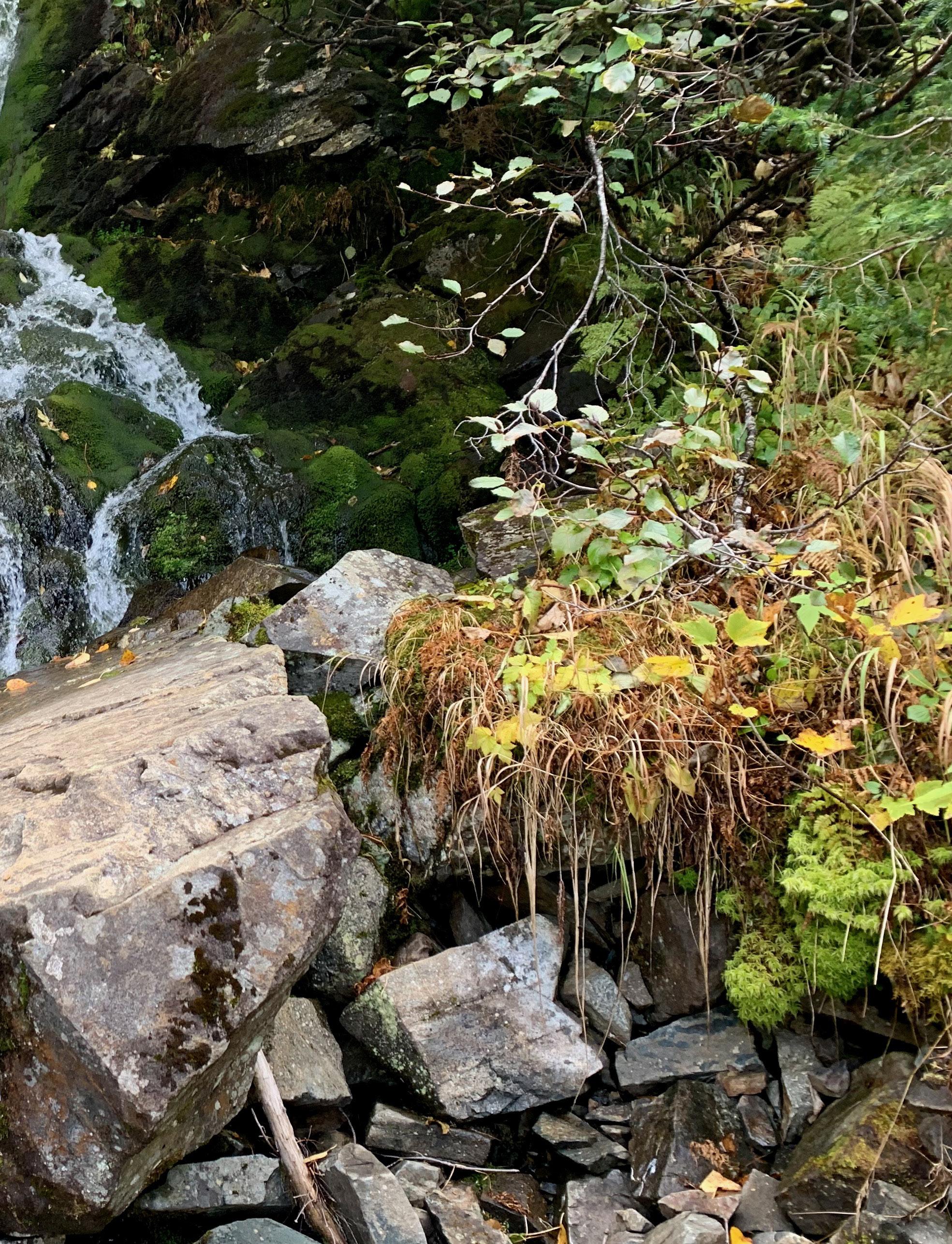
“The larger systemic issue is one of disconnection, which allows us to do things like colonization, exploiting resources without concern of how we’re impacting the rest of creation or our chil dren’s future,” said Zelniker. “Trees have existed on the planet almost 400 million years. Surely, they have something to teach us about longevity and sustainabil ity.”
When crossing the border once again at his journey’s end, Zelnicker explained his film’s message to a border guard. She told him he could avoid the two-week quarantine and she would promise not to use Charmin toilet paper again.



Assistant Manager – Chisasibi Quebec



The Challenge
Repor�ng to the Branch Manager, you take on an important role in the day-to-day opera�ons and success of the branch and community banking centers. You will contribute to the achievement of business objec�ves and volume growth through developing strong customer rela�onships. You are accountable for delivering professional service to customers by understanding their needs and providing the right banking solu�ons including credit products, credit counseling, basic investment products and promo�ng the sale of all personal banking products and services. You will provide strong support to the Branch Manager in the daily opera�ons. Your effectual communica�on, pleasant personality, as well as strong a�endance, punctuality and
will be important to
Qualifications
and
success.
Better bandwith
Starlink service provides high-speed internet to remote communities
by Ben PowlessAfter the Nishnawbe Aski Nation (NAN) announced a program to cover the costs for Starlink sat ellite internet service in August, many First Nations communities in Ontario have taken up their first chance to obtain high-speed internet service.
Starlink, a division of billionaire Elon Musk’s SpaceX company, uses satel lites in near-earth orbit to offer lower-la tency service.
In 2020, Pikangikum First Nation became the first Indigenous commu nity to connect to Starlink, with a pre liminary order of 60 dishes for homes and businesses, and a stated order for another 40 by the end of the year.
In the same year, SpaceX offered to launch 58 satellites at a higher orbital plane that would allow them to offer service in Alaska and Canada’s High Arctic. According to their website, that service will begin in 2023.

After NAN announced a program to reimburse the cost of the Starlink hardware and one year of service for families with children in school, and up to 90% for those with children out of school, Moose Factory has seen an uptake on the service in the community.
Lindy Linklater, Interim Director of Administration and Communications for Moose Factory, said that about 100 homes and several businesses in the
community have taken advantage of the service.
Before Starlink, two other compa nies provided internet service. But it wasn’t great, said Linklater.
“The feedback on Starlink has been very positive, people are very satis

fied with what they’ve delivered,” he said. Other communities, includ ing Fort Albany, Kashechewan and Attawapiskat, also use the service.
Linklater installed the service at his own home. “When it first came out, it got really high speeds, like 300 or
400-megabit downloads. Since more people have gotten it, it’s dropped to 200, but it’s still very fast,” he said, point ing out that there are no download caps. At 200-megabit speeds, a high-definition film can be downloaded in under five minutes.
He said the community was allocated 60 Starlink units with the NAN program, but they’ve only assigned about 70% of those units so far. The remaining ones are to go to homes, but some have been given to cultural camps that work with youth and some for educational purposes.
Heather Moore, Executive Director at the Moose Cree Education Authority, said they were allocated five Starlink satellite dishes, with a backlog of 10 others for staff and teachers.
“During the pandemic when students were schooling at home, and parents working from home, the bandwidth of service providers was not great enough to accommo date say four students and two parents. There was lag, and people would get booted off,” she said.
Then they heard about the NAN project to provide Starlink to schools. “Plus, it would be provided to teach ers so they’d have good connectivity and there would be no interference with classes when remote learning,” she said.
In addition to the band-run school, Starlink devices were also provided to the provincially run school and the private Christian academy on Moose Factory Island.
Moore credits the NAN subsidy with enabling many families to connect, since not many could have afforded it otherwise. Starlink’s website shows the hardware is avail able for $759, with a monthly fee of $140. Service maps on the website show that the service is available throughout Eeyou Istchee, except for Whapmagoostui, where service is indicated to be available in 2023.

AGA Resolutions Eeyou Istchee
Grand Council of the Crees (Eeyou Istchee) /Cree Nation Government
Annual General Assembly
Resolution: Eeyou Istchee Sports and Recreation Association
WHEREAS the delegates of the Grand Council of the Crees (Eeyou Istchee)/ Cree Nation Government 48th/45th Annual General Assembly have received and reviewed a presentation from the Eeyou Istchee Sports and Recreation Association;
IT IS RESOLVED
THAT the delegates of the Grand Council of the Crees (Eeyou Istchee)/ Cree Nation Government 48th/45th Annual General Assembly hereby mandate the Grand Council of the Crees (Eeyou Istchee)/ Cree Nation Government to work with the Eeyou Istchee Sports and Recreation Association and explore the options for the sources of funding for a possi ble Department to address the sports and recreation initiatives in Eeyou Istchee.
Proposed by: Chief Daisy House Seconded by: Chief Michael Peata
Resolution: Promotion of Cree Business While Maintaining a Separation from Governance Responsibilities

WHEREAS the delegates of the Grand Council of the Crees (Eeyou Istchee)/ Cree Nation Government 48th/45th Annual General Assembly have dis cussed the need for the promotion and development of Cree private entrepre neurial expertise and capacity which is very important to keep distinct and separate from government or public service roles and responsibilities;
IT IS RESOLVED
THAT the delegates of the Grand Council of the Crees (Eeyou Istchee)/ Cree Nation Government 48th/45th
Annual General Assembly mandate the Grand Council of the Crees (Eeyou Istchee)/ Cree Nation Government to develop and implement policies for ensuring the promotion and develop ment of Cree private entrepreneur ial expertise and ensuring that elect ed officials, public servants refrain from placing themselves in conflicts of interest during their tenure with the Cree Nation Government or from using information acquired during the term for personal gain.
Proposed by: Denis Moses Seconded by: Justice Coon Come
Resolution: Cree Harvesting Practices
WHEREAS there is considerable pres sure on the land and wildlife resourc es of Eeyou Istchee from increased access to the territory, sports hunts, development and the growth of the population of Cree Nation of Eeyou Istchee;
WHEREAS it is imperative that the Cree Nation develop and implement tools to ensure the preservation of healthy wildlife populations, such as;
IT IS RESOLVED
THAT the delegates of the Grand Council of the Crees (Eeyou Istchee)/ Cree Nation Government 48th/45th Annual General Assembly here by requests that the Cree Trappers’ Association to lead Cree govern ments, organizations and entities in the acknowledgement and reaffirma tion of Responsible Cree Harvesting Practices to be used in guaranteeing the maintenance of healthy wildlife populations throughout Eeyou Istchee.
Proposed by: Willie Iserhoff
Seconded by: Billy Natawapinsekum
Resolution: Whapmagoostui Access to Government Fuel Subsidy
WHEREAS the Gasoline Program through the Kativik Regional Government delivers meaningful support to subsistence harvesters by facilitating their access to hunting and fishing areas;
WHEREAS the harvesting activi ties are of crucial importance for Cree to continue practicing their way of life and generates an important source of food and contributes to preservation of our cultural identity. Traditional food is moreover recognized for its high nutritional value;
WHEREAS the high price of gas oline in the region is due, in part, to additional costs incurred for the trans portation of fuel from the south to the community Whapmagoostui and, in part, to additional costs incurred for the financing of annual fuel stocks;
WHEREAS the annual fuel supply to Whapmagoostui must be carried out during the short summer months when marine shipping lanes are icefree. Federal and provincial taxes are applied after transportation and financ ing costs have been added to the price paid for the gasoline by local distributers;
WHEREAS the impact on the com munity members of Whapmagoostui has been increasing substantially each year and this year, the price is the highest ever recorded;
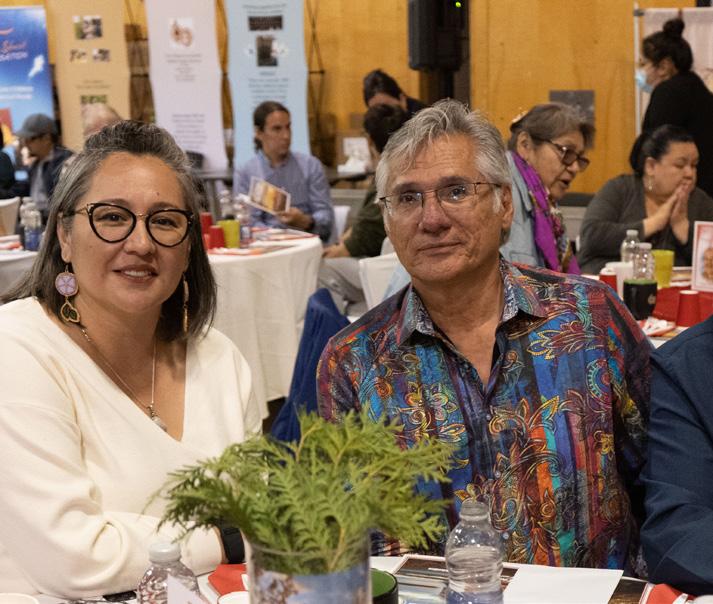
WHEREAS a subsidy is available for isolated municipalities in Quebec from the Quebec Government includ ing gas subsidy;
WHEREAS a subsidy of 30% of the gas price at the FCNQ co-op will serve to alleviate the fuel cost of con tinuing the way of life;
IT IS RESOLVED
THAT the delegates of the Grand Council of the Crees (Eeyou Istchee)/ Cree Nation Government 48th/45th Annual General Assembly hereby give fully support for the community of Whapmagoostui to access the same subsidy as their twin community of Kuujjjuaraapik and the rest of the Nunavik communities;

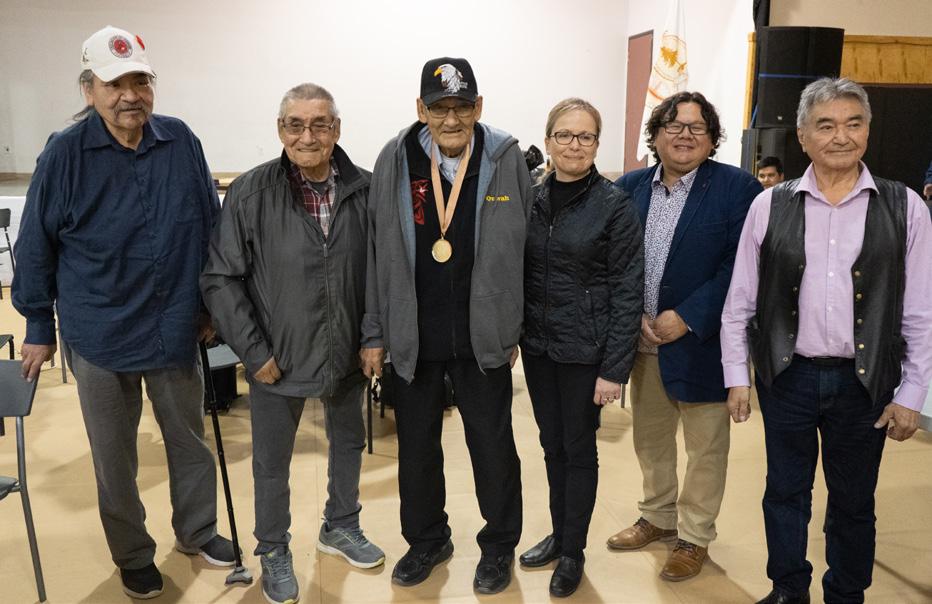
THAT the Director General be hereby given direction to do all things necessary to give effect to the fore going.
Proposed by: Chief Petawabano
Seconded by: Diana Simard
Resolution: Ensuring Youth Have Access to Eeyou Istchee

WHEREAS the delegates of the Grand Council of the Crees (Eeyou Istchee)/ Cree Nation Government 48th/45th Annual General Assembly have dis cussed the desire and the need for the Youth of Eeyou Istchee to have access to and opportunities to learn and practice Cree traditional activities throughout Eeyou Istchee;
WHEREAS the wildlife resources and Eeyou Istchee itself are limit ed resources requiring that all gov ernments and members of the Cree Nation do what they can for their preservation for generations to come;
IT IS RESOLVED
THAT the delegates of the Grand Council of the Crees (Eeyou Istchee)/ Cree Nation Government 48th/45th Annual General Assembly hereby request that the Grand Council of the Crees (Eeyou Istchee)/ Cree Nation Government with the Cree Trappers’ Associations, the Cree Nation Youth Council’s and Elders’ Councils of
Eeyou Istchee develop a strategy to enhance access and opportunities to learn and practice Cree traditional activities throughout Eeyou Istchee for the Youth of Eeyou Istchee in a manner respectful of Cree customs, safety requirements, our obligations to the land, the wildlife and one another.
Proposed by: Kaitlyn Hester Moses
Seconded by: Don Saganash
Resolution: Access to Private Housing Fund for Cree Entrepreneurs
WHEREAS the Grand Council of the Crees (Eeyou Istchee)/ Cree Nation Government has established a Private Housing Fund and Private Housing Program with a view to addressing the housing crisis and shortage in Eeyou Istchee;
WHEREAS the access to private property or residential lots in Eeyou Istchee is governed by the Local Governments of Eeyou Istchee;
WHEREAS the Fund is currently only available to individual Cree com munity members and there are Cree Entrepreneurs of wholly-owned and locally-based Cree companies which could assist in fighting the housing shortage if they were allowed to access the Private Housing Fund;
IT IS RESOLVED
THAT the delegates of the Grand Council of the Crees (Eeyou Istchee)/ Cree Nation Government 48th/45th Annual General Assembly hereby request that the Grand Council of the Crees (Eeyou Istchee)/ Cree Nation Government develop and implement amendments to the Cree Nation Private Housing Fund Program to allow Cree entrepreneurs that are Cree wholly-owned and locally-based to access the fund and help in address
ing the housing shortage in Eeyou Istchee.
Proposed by: Lisa Petagumskum
Seconded by: Susan Esau
Resolution: Economic Security Program for Cree Hunters
WHEREAS the Economic Security Program for Cree Hunters (previously “Cree Hunters’ Income Security Program”) is a constitutionally guaranteed program under the James Bay Northern Quebec Agreement which has been instrumental in helping preserve the Cree way of life;
WHEREAS the program has not kept pace with the increases in cost of living, the increase in challenges of accessing the territory and practicing the Cree way of life and the increase in the number of communities entitled to and wanting to access the program;
IT IS RESOLVED
THAT the delegates of the Grand Council of the Crees (Eeyou Istchee)/ Cree Nation Government 48th/45th Annual General Assembly hereby request that the Grand Council of the Crees (Eeyou Istchee)/ Cree Nation Government to undertake formal negotiations with the Government of Quebec and the administration of the Economic Security Program for Cree Hunters to increase the availability of the program to members of the Cree Nation, increase benefits to ensure that beneficiaries can pursue the program with economic security and ensure that the rules and restrictions protect the dignity of all beneficiaries.
Proposed by: Chief Clarke Shecapio
Seconded by: Chief Petawabano





hand-me-
Chevy

Last mile
by Sonny OrrIt’s finally a relaxing day after nearly 2,000 kilometres guided by a global positioning device that made me go in circles a few times. The snake merging and the rapid pace of the local traffic made it a hard for the new guy in town, namely me.
But my road rage didn’t surface too much as I am a hardened profession al driver, especially after going through heavy rains, creating rapids on the ramps leading to another ramp and so on. I kind of wished that I had a steel-hulled jet boat at times. After settling down, we feasted in a fine dining room. Wolfing down entrees and plates of freshly made bread rolls that stopped my stomach from growling made me smile.
It was a gathering of the minds, to address tough stuff like trying to figure out the best way to approach businesses. We concluded that the nicest way isn’t always the best and found other great teambuilding ideas.
A strategic plan was arising, soon to guide our overall way of doing business. After a few days of intensive thinking, the final teambuilder was learning how to play the bongo drums. I must admit that it was therapeutic and fun. After half an hour of united beats among 20 eager drummers, we finally managed to carry a tune, or at least a bit of rhythm.
Before the drive home, it was neces sary to visit Mohawk country in search of American goods like chocolates and drinks. After finding that famous little store and driving through someone’s pri vate property by mistake, the realization
of the huge drive-by market that rumbles across the river from Montreal started kicking in my business-minded brain.

I asked the friendly store owner if there was a place where I could get a good steak. Sure, just down the road a few hundred feet – my uncle’s place, he answered. Cool, so I tripped down the road for a few seconds and pulled into the driveway, where I got lost immediately but was thankfully saved by a valet.

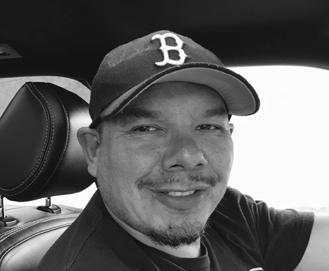

We went inside and were greeted with style. Wow, the Mohawks sure know how to make a nice restaurant, I thought. After being seated by our friendly server, we order meat and potatoes. A short while later, the meal arrives, perfectly grilled. Not a bone in sight and my stom ach cried with happiness. A sweet tea later, since I needed all my wits about me as we headed off to the nearest mall for some late-night shopping.
Plunking down in the room later, I fell asleep immediately as an early-morning trip to the North awaited. It was back to coffee in take-out cups and standard scrambled eggs with the sausage du jour and toasted bagel before we headed north.
At the final coffee stop, I reached for my cup, and something bit me hard in the palm of my hand. It was a small but defensive bee and now I know why it’s called stinging. The rest of the day was a one-handed driving test that lasted until sundown.
At last, the final night and we all pass out gratefully before starting again the next morning. The last leg, the one where I don’t have to drive as I lost my pilot’s license 30 years ago… but that’s another story.
It was back to coffee in take-out cups and standard scrambled eggs with the sausage du jour and toasted bagel
UTNS




Under the Northern Sky
Orange Shirt Day 2022
by Xavier KataquapitSeptember 30 marked the second annual National Day for Truth and Reconciliation, a national holiday in Canada commemorating the memory of the residential school era that affected thousands of Indigenous children and their families across the country.
It is also commonly known as Orange Shirt Day, which was originat ed by the Indigenous members of the St. Joseph Mission Residential School Commemoration Project and Reunion, an event first held in Williams Lake, BC, in 2013.
The image of the orange shirt comes from the story of Phyllis Jack Webstad, a survivor of this residential school. She recounted how, in 1973 when she was six years old, her grandmother had given her a bright new orange shirt to wear to school. When she arrived at the school, all her clothes were taken away and she was instead given a plain school uniform. As a child, it must have been terribly upsetting to lose such a precious gift from her grandmother. The childhood memory of that bright orange shirt gave her a per manent reminder of that period of her life and what she and others experienced at residential school.
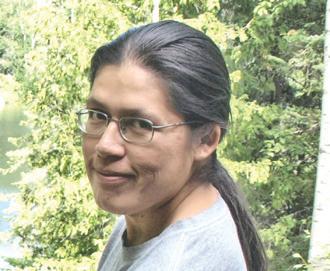
That feeling of loss, pain and sad ness represented by a bright orange shirt became a symbol for other survivors of the residential school era. It is also a powerful reminder for someone like me who is the child of two residential-school survivors. My father Marius Kataquapit attended the notorious St. Anne’s Residential School
in Fort Albany, and my mother attended the Fort George Residential School near Chisasibi. It wasn’t until the end of their lives that my parents talked about their experiences at these schools. The lifelong trauma that they lived with was passed down to those in my generation and it continues to affect our communities in many negative ways.
This year’s commemoration served as a reminder as to where and how this period of Canadian history occurred in the first place. It happened because the very wealthy wanted to develop the resources of this country by systemically remov ing Indigenous peoples. The residential school system and many other dark ini tiatives came about because the wealthy few wanted more riches.
These days, there is a strong resur gence of conservative and right-wing ideas. More and more closed-minded political leaders are preying on people’s fears and hate. The billionaires of this world who control corporations, media and government to a great degree want to put in right-wing political leaders who will do their bidding. They won’t have to pay attention to sharing any wealth fairly, they won’t need to worry about environmental or conservation concerns and they can develop resources anywhere.
We need only to look back at history to recall the right-wing fascist movements where the very wealthy put in place lead ers like Hitler in Germany, Mussolini in Italy, Franco in Spain and Pinochet in
Chile. The strategy in supporting these right-wing leaders was to get rid of the idea of social democracy, labour unions and any groups who advocate for equita ble distribution of wealth.
The right-wing and fascist ideas today that are growing everywhere are the same forces that established pro grams like a residential school system. Indigenous people were seen as a threat to society and business that should be eliminated.
The National Day for Truth and Reconciliation Day or Orange Shirt Day is not just a commemoration of what hap pened in the past. It serves as a reminder and a warning to society that we all must work together to make sure that this never happens again.
If we do not want to see this type of intolerance and hatred again, we have to do something about it now by stand ing up to hate and right-wing political movements. If we do not, far-right forces will bully their way into government and there will be no more reconciliation, no more meaningful treaty negotiations, no positive social and health and education benefits to Indigenous people.
I don’t think any of us want these kinds of right-wing leaders in power in Canada or anywhere else in the world. Orange Shirt Day is a reminder that while we think of all those affected by the residential schools, we need to stand up against right-wing, hate-filled fascist movements.
Where can you pick up a fresh copy of your Nation every two weeks?
Where can you pick up a fresh copy of your Nation every two weeks?
Where can you pick up a fresh copy of your Nation every two weeks?
– Chisasibi Coop | T: 819-855-2828 Retro Daze Café | T: 819-855-1847
Chisasibi Coop | T: 819-855-2828
Let’s cheer these amazing businesses listed below… Nation is available there!
Let’s cheer these amazing businesses listed below… Nation is available there!
Let’s cheer these amazing businesses listed below… Nation is available there!
Retro Daze Café | T: 819-855-1847
BAKECREE | T : 819-855-6344
Chisasibi Coop
BAKECREE | T : 819-855-6344
The Yummy Cook Out | T: 819-855-2241
The Yummy Cook Out | T: 819-855-2241
–
Whale Mart
Yummy
Eastmain Grocery Store
Eastmain Grocery Store T: 819-977-0283
Eastmain Grocery Store
T: 819-977-0283
819-977-0283
Smokey Hill Grocery T: 819-895-2727
– Smokey Hill Grocery T: 819-895-2727
Smokey Hill Grocery
819-895-2727
Waswanipi Grocery T: 819-753-2514
819-753-2514
in Whapmagoostui in Chisasibi in Wemindji in Eastmain in Nemaska in Waskaganish in Waswanipi in Oujé-Bougoumou
in Whapmagoostui in Chisasibi in Wemindji in Eastmain in Nemaska in Waskaganish in Waswanipi in Oujé-Bougoumou
Wemindji Community Store T: 819-978-3656
Wemindji Community Store T: 819-978-3656
Wemindji Community Store T: 819-978-3656
Nemaska Grocery T: 819-673-2525
Nemaska Grocery T: 819-673-2525
in Mistissini
Whale Mart Waswanipi Grocery T: 819-753-2514
Whale Mart Waswanipi Grocery
– Meechum Reg’ T: 418-923-3217
in Mistissini
in Mistissini
in Whapmagoostui in Chisasibi in Wemindji in Eastmain in Nemaska in Waskaganish in Waswanipi in Oujé-Bougoumou
Meechum Reg’
Meechum Reg’ T: 418-923-3217
T: 418-923-3217
Casey’s Depanneur and Gaz T: 418-745-3211
Nemaska Grocery T: 819-673-2525 Casey’s Depanneur and Gaz T: 418-745-3211
Casey’s Depanneur and Gaz T: 418-745-3211
Always available for download at: nationnews.ca
Always available for download at: nationnews.ca
Your Northern Airline of Choice
Air Creebec is operating by respecting and exceeding the rules with extensive cleaning and disinfecting of the aircraft, social distancing on board and at all service counters. We encourage everyone to respect the rules and to stay safe.

For the latest Air Creebec updates, please visit aircreebec.ca/covid19
